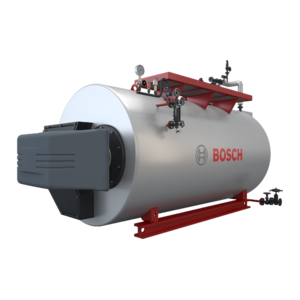The boiler might be a primary region of international utility in power plants. ”
The boiler system functions with the heat distribution system, heat-emitting system & management systems. A boiler is the most operational component of thermal power plants. In Germany, providers and manufacturers refer to Dampfkessel Hersteller . A boiler could be a closed, heated pressure vessel or a pressure pipe system that’s accustomed generate vapour at the pressure on top of gas pressure (p> one.013 bar absolute) or quandary at temperatures on top of a hundred ° C for heating and operational functions. For further details Dampfkessel Hersteller.

If the boiler is employed to get steam, it’s referred to as a steam generator. counting on the utilization of steam, saturated steam, or superheated steam is generated in a very boiler. A boiler or steam generator is employed where a supply of steam is needed. the shape and size depend on the application: mobile steam engines like steam locomotives, transportable engines associated with powered road vehicles usually use a smaller boiler that forms an integral part of the vehicle; stationary steam engines, industrial installations, and power stations can sometimes have a bigger separate steam-generating facility connected to the point-of-use by piping. A notable exception is that the powered fireless locomotive, wherever separately-generated steam is transferred to a receiver (tank) on the locomotive.
Steam generator
Type of steam generator unit employed in coal-fired power plants
The steam generator or boiler is associated with an integral part of an external-combustion engine once thought-about as a chief mover. but it must be treated individually, on some extent a spread of generator sorts is combined with a spread of engine units. A boiler incorporates a furnace or chamber to burn the fuel and generate heat.
Boiler sorts
Fire-tube boiler
Haycock and wagon prime boilers
For the primary Newcomen engine of 1712, the boiler was very little over giant brewer’s kettle put into a lower place the facility cylinder. as a result of the engine’s power was derived from the vacuum made by condensation of the steam, the necessity was for big volumes of steam at terribly air mass hardly over one psi (6.9 kPa) the total boiler was set into masonry that preserved some heat.
Cylindrical fire-tube boiler
Flued boiler
An early soul of the cylindrical kind was British engineer John Blakey, UN agency projected his style in 1774.[1][2] Another early soul was the Yankee engineer, King Oliver Evans, UN agency justly recognized that the cylindrical kind was the simplest from the purpose of reading of mechanical resistance and towards the tip of the eighteenth century began to include it into his comes.[citation needed] in all probability galvanized by the writings on Leupold’s “high-pressure” engine theme that appeared in comprehensive works from 1725, Evans favoured “strong steam” i.e. non compressing engines within which the steam pressure alone drove the piston and was then exhausted to atmosphere. The advantage of sturdy steam as he saw it was that additional work might be done by smaller volumes of steam; this enabled all the parts to be reduced in size and engines might be tailored to move and tiny installations. to the current finish, he developed a protracted cylindrical atomic number 26 horizontal boiler that was incorporated one hearth tube, at one finish of that was placed the hearth grate. The gas flow was then reversed into a passage or flue to a lower place the boiler barrel, then divided to come back through aspect flues to affix once more at the chimney (Columbian engine boiler). Evans incorporated his cylindrical boiler into many engines, each stationary and mobile. thanks to house and weight issues the latter were one-pass exhausting directly from the hearth tube to the chimney. Another soul of “strong steam” at that point was the Englishman, technologist. His boilers worked at 40–50 psi (276–345 kPa) and were initially of subfigure then cylindrical kind.
Multi-tube boilers
A significant success came in France in 1828 once brandy Seguin devised a two-pass boiler that the second pass was shaped by a bundle of multiple tubes. the same style with natural induction used for marine functions was the favoured Scotch marine boiler.
